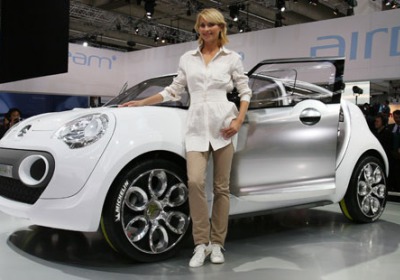Citroen C-Cactus concept's green secrets
Mon, 17 Sep 2007By Tim Pollard
Motor Shows
17 September 2007 12:52
Citroen C-Cactus: the lowdown
Citroen’s C-Cactus concept car on show at Frankfurt signals the start of a programme to investigate simplifying the construction of its cars –stripping out unnecessary weight, complexity and emissions from its everyday hatchbacks and saloons. And it’s not as far flung as it looks. Its designers told CAR Online that this concept wasn’t about the external design, but rather the way the project was conceived and built. This is ‘an ideas car’. So forget the cutesy look of the C-Cactus and concentrate instead on the fact that it weighs an impressive 400kg less than a conventionally fuelled C4 upon whose underpinnings it rides.
‘We didn’t want to work just on the technology in the car’ said Gilles Vidal, the designer. ‘We wanted to look at the whole environmental question from dust to dust. We quickly realised we wanted a lighter car. There’s a virtuous circle where you add some new technology, and before you know it you need bigger brakes to stop the heavier car, and weight just balloons. The C-Cactus is an attempt to get away from that.’ So how have they removed weight? By going back to the drawing board and reassessing everyday needs, especially in the interior. Do we really need bulky window winding mechanisms? Not really, they found, so the C-Cactus has just a small sliding flap for handing over toll money. This means the door panel is now a one-piece pressing that’s cheaper to make and lighter. And its decorative element uses simple cut-outs revealing a contrasting material behind. A simple way to include eye-pleasing cabin design without the need for extra chrome strips or wood fascias. And rather than hiding a lot of the car’s innards behind plastic cladding, the designers have instead tried to make features of them. So the air-con system is on view where a centre console would normally sit. That’s right, the C-Cactus doesn’t even have a dashboard.
By Tim Pollard



